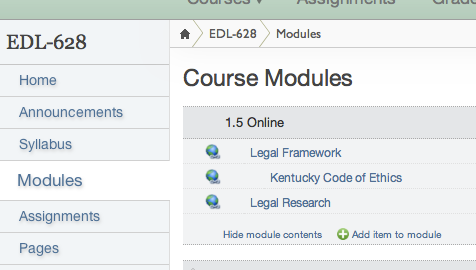architectures of control: Learning Platform Edition

There is a race on to control the architecture of online learning. While that race has been running for the past decade or more, largely dominated by a software for-profit called Blackboard and opensource freeware like Moodle, yesterday was a particularly momentous day. Yesterday it was announced that Google and Pearson are teaming up to release a new higher education focused Learning Management System called OpenClass as part of Google Apps. Also, lately, new products are emerging that are changing the race, such as the LMS Canvas, which we are likely to implement in our leadership programs at our university (for those wanting specifics on how to recode education … there you go; try it, you’ll like it).
Rather than speak to any one platform, which lots of other ed. tech. bloggers have done, I want to speak to the importance of controlling this architecture and why I expect this race to enter a new gear in the next few years, leading to some difficult choices for you.
First, it is about power and money, but not how you would expect.
These four, just using those mentioned already as an example, are very different types of companies. Moodle is not even really a company, it is just a open source project people are happy to work on. Canvas is the product of a small start-up minded company from Utah that taps their LMS into other free, open API products like Twitter, Google Docs and Skype. Blackboard is the old behemoth, billion dollar company who has mastered this market by making very large contracts with education systems. And Pearson is a multibillion dollar global publishing house based in London currently focused on shifting from paper to digits. You can see all their industries in this (not so) cute animation. Finally, I’m guessing you are aware of Google.
So, if we had our choice, who do we want controlling this learning architecture? I have my preferences, and I’d be quite interested in yours (please leave a comment), but let’s talk about why those preferences will matter.
Whatever the best-case answer is, we should ask the question why are all these different types of groups in this space right now? As Blackboard has shown, there is a lot of money to be made directly through service contracts with universities and schools. But, Google considers that pennies. And those contracts are not all that big of a deal for Pearson either. On the other hand, why are young entrepreneurs like those at Canvas jumping in this space when it is so thoroughly dominated by Blackboard right now (they have managed to buy basically every competitor)? And, how is it that an under-the-radar open source project like Moodle continues to thrive off the free time and labor of engineers and developers?
These types of questions, questions that seek to understand the underlying code, paint an interesting picture that clearly says something more is at stake than a few hundred million dollars worth of service contracts. What is actually at stake in this race for the learning platform is substantial control of not only the education system, but all of the implications and tangential elements thereof. If you can control the architecture of learning, you have put yourself in a position to capitalize on both what is learned (Pearson) and the imprint of how learning happens embedded in the brain of each student (Google).
This is why I am certain that whatever platform manages to get a leg-up in this race will undoubtedly be free, or mostly free. The days of massive multi-million dollar exclusive LMS contracts with universities and school systems are nearly over (yes, I know it might not seem that way right now). They will linger on for perhaps another decade in those institutions that are slow to change, but the innovative places will quickly transition to this new type of LMS represented not by Blackboard, but by Moodle, Canvas and OpenClass.
Understand that the real money in learning management software is not in the software it is in the peripherals. Moodle has proven that running a LMS is possible even with no money. Canvas has proven that a group of entrepreneurial kids can compete directly with established giants. What these groups have really proven is that the software is not where the value lies. The software is cheap and easy. Instead, the value is in the familiarity with Google Apps and then the billions that can be made by advertising to those students once they are no longer students (hopefully they will wait till then). The real money is also in all the content that schools must purchase to integrate into that LMS, something Pearson is quite good at. The danger of holding all of those cards is perhaps why educational engineers and developers are willing to spend late nights coding away on Moodle, even though Moodle will never match the beauty and integration possible from others.
So, here we are at a coding crossroads and you, dear educator, sit at the controls. In the next few years, you will have critical decisions to make. Every time you or your school choose an LMS, you are writing the code to the next generation architecture of learning. Each of those architectural choices has consequences far beyond the LMS contract. So please, choose wisely.





